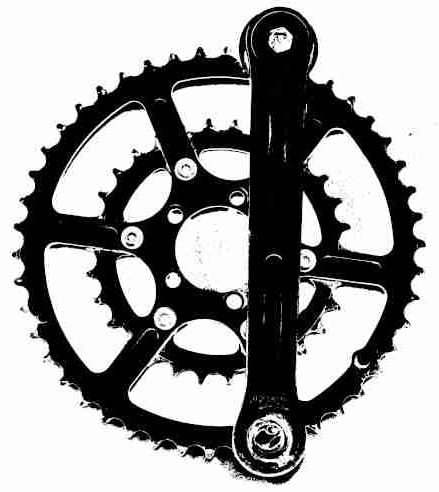Should You Replace Cassette with Chain?
Your bicycle chains wear and have to be replaced. But your cassette wears too, which prompts the question: Should you automatically replace the cassette with the chain?
Many manufacturers (and bike shops) argue yes: “the worn chain has worn the cassette”. But the truth is that cassettes can last longer than the chain.
In this article I will explain when you should replace cassette with chain and when not. Reading this will safe you real money, particularly with pricey 1×12 components. Be sure to check the biggest money-saving tip at the end!
Answer: Test ride
Cassette wear is hard to quantify. A trained eye can see wear marks on a cog, but telling if it is too worn is really difficult.
The only way to find out of the cassette is too worn is to test it with the new chain. Procedure for testing the cassette is as follows:
- Install new chain on the bike.
- Check shifting: see that shifting works properly on repair stand/shop floor, adjust derailleur if necessary. (This is important to tell a chain skip apart from shifting attempts.)
- Test ride on level ground, sitting on the saddle. Test the chain on each cog carefully –remember that the pedals may give in at any moment.
NB. Always have one fresh cassette on the shelf for each of your bikes. This makes maintenance more practical.
Chain skips – Replace cassette
The main issue with a new chain on a worn cassette is chain skipping – this means that the chain “slips” on the cassette cog.
Chain skipping can be felt and heard: the pedal suddenly gives in under pressure and you hear a sharp noise. Skipping is too fast to see, but these two indications are enough (if you excluded poor derailleur adjustment).
Chain skipping means that the cog in question is too worn to be used. Usually it makes sense to replace the cassette at this point – your favorite cogs are the first ones to skip and avoiding them is too limiting.
Grinding noise – Replace cassette
Another symptom of a worn cassette is grinding noise when pedaling: the chain makes a low uneasy noise as if you’d be shifting (but you’re not). You may also feel some vibration on the pedals.
Grinding noises and feel result from the new chain rollers trying to settle onto the worn teeth of the old cassette cog. The teeth have lost material from their rear faces and make the chain roller rise too high on the tooth. This effectively lengthens the cog pitch and causes a mismatch between the chain and cog pitches, resulting in unstable meshing.
If multiple cogs make noise, change the cassette. Avoiding many cogs is too much of a pain even in commuting, let alone in competitive road or MTB.
If a single cog makes noise, you have a decision to make: live with it and save some money, or go safe and change the cassette. I recommend changing the cassette for any MTB and for competitive road use – the noise may become a chain skip and lead to a crash.
No issues – Keep cassette
If the new chain and old cassette work without issues, keep the old cassette for now. There is really no reason to discard the old cassette pre-emptively if it works.
Some claim that a somewhat worn cassette will wear down the new chain faster. And there is certainly some truth to this. But considering the price difference between the cassette and chain (~4x), sacrificing some chain life for more cassette life is worth it!
Best solution: Rotate chains
The optimal solution to drivetrain wear is to rotate three or more chains on a single cassette.
Drivetrain components work best when their wear level is similar. But chains wear faster, cassettes slower. What’s the solution? Make the chains work in shifts.
Chain rotation works like this:
- Ride a fresh cassette and chain for 500 miles (800 km)
- Switch in a 2nd fresh chain and put the 1st chain on the shelf
- Ride the 2nd chain for 500 miles – then on the shelf and 3rd fresh chain in
- After riding the 3rd chain for 500 miles, put it on the shelf and put the 1st chain back on the bike
- Ride the 1st chain for 500 miles (now for the 2nd time), switch to the 2nd chain, and so on
The magic of chain rotation is that it equalizes the chain and cassette wear rates. This gives you more miles out of both chain and cassette and makes the drive train work smoother through its service life.
The savings potential in chain rotation is huge: my experience is that chain rotation doubles chain and cassette life.
Rotating chains is today very practical too: with master links, chain removal and installation take less than one minute. Chain cleaning and lubrication is also more efficient in batches and off the bike.


